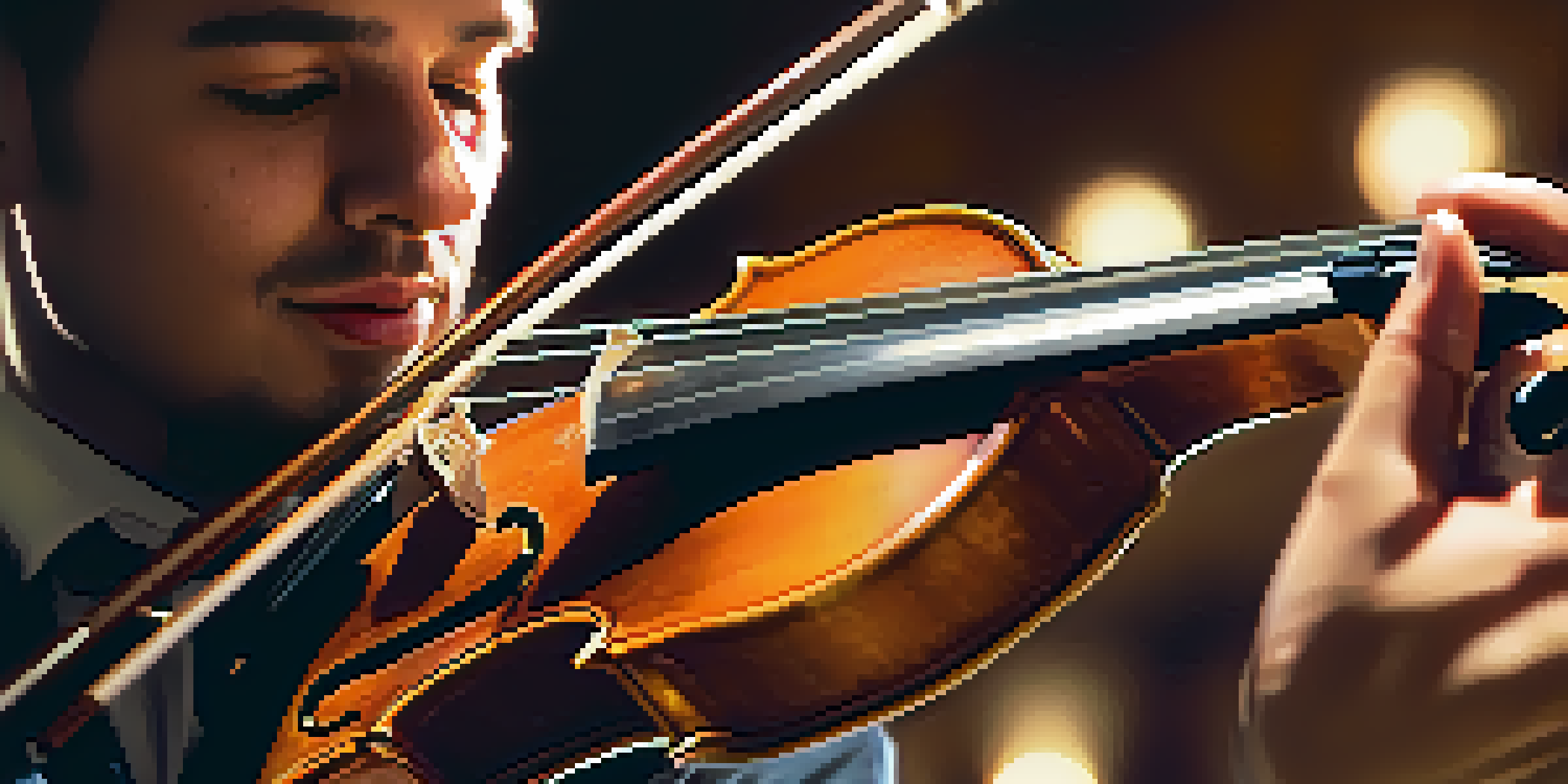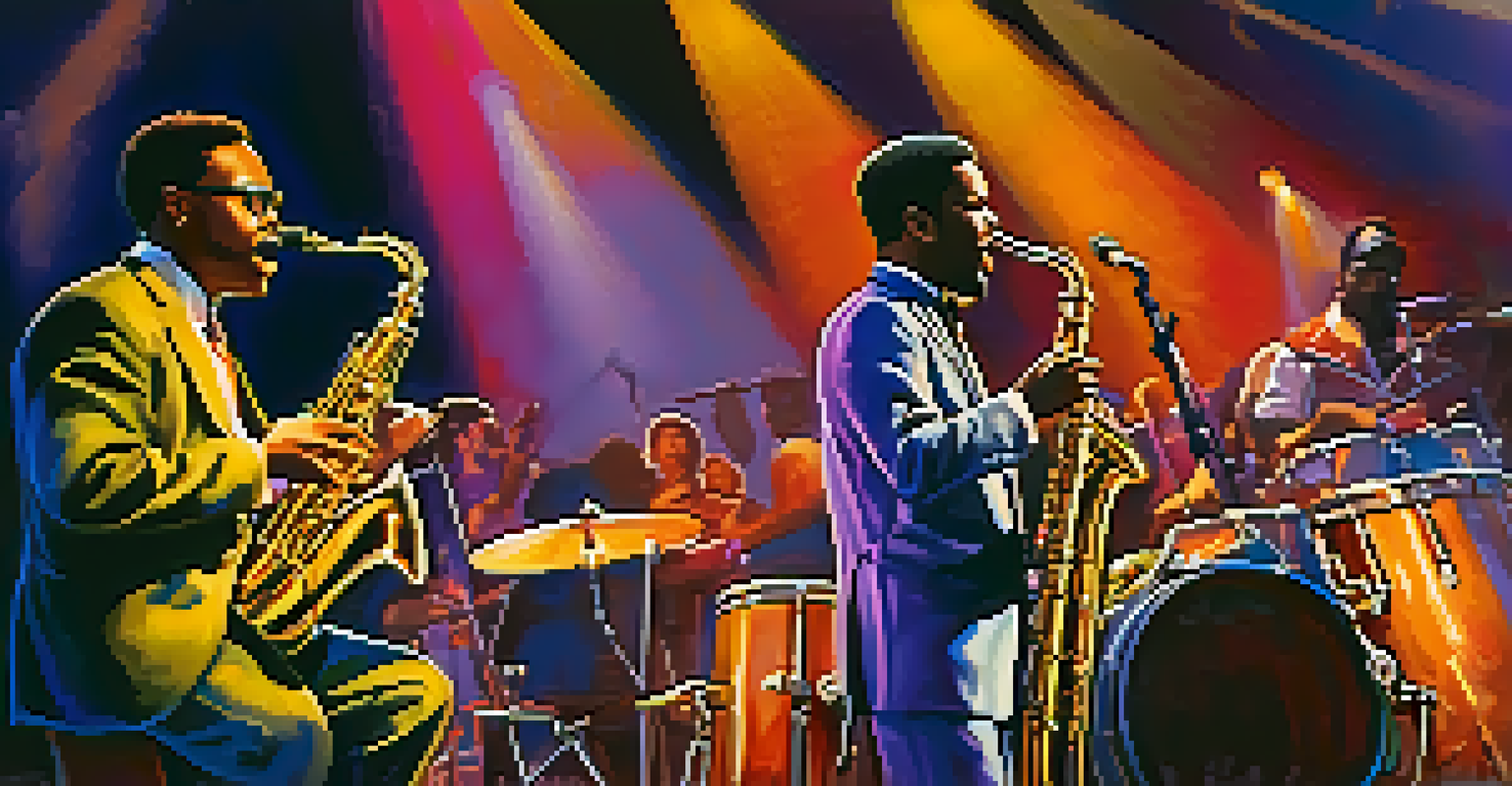Understanding Time Signatures: A Guide for Musicians

What Are Time Signatures and Why Do They Matter?
Time signatures are fundamental notations in music that indicate how many beats are in each measure and what note value is equivalent to a beat. They serve as the blueprint for rhythm, guiding musicians on how to interpret and perform a piece. Without a clear time signature, a piece of music could become chaotic, making it difficult to maintain a consistent tempo.
Music can be understood as a time signature, a rhythm that sets the mood and tells a story.
For instance, a time signature of 4/4 tells you there are four beats in each measure, with the quarter note receiving one beat. This is the most common time signature, often referred to as 'common time.' Understanding this concept allows musicians to align their playing with others, creating a harmonious sound.
In essence, time signatures not only provide structure but also influence the overall feel of the music. Whether you’re playing a lively jig in 6/8 or a somber piece in 3/4, the time signature plays a crucial role in conveying the intended emotion.
Breaking Down the Components of a Time Signature
A time signature consists of two numbers: the top number indicates how many beats are in a measure, while the bottom number signifies which note value constitutes one beat. For example, in 3/4, there are three beats per measure, and the quarter note gets the beat. This simple structure is essential for understanding how to play or compose music effectively.

The top number can vary widely, leading to different time signatures like 2/4, 6/8, and even 5/4. Each of these creates a unique rhythmic pattern that influences the flow of the music. Musicians can express a wide range of styles and emotions simply by changing the time signature.
Understanding Time Signatures
Time signatures are essential for defining the rhythmic structure of music, indicating the number of beats per measure and the note value that gets the beat.
Understanding these components helps musicians identify and internalize the rhythmic feel of a piece. It’s like knowing the rules of a game—once you grasp them, you can play with confidence and creativity.
Common Time Signatures and Their Characteristics
Some time signatures are more common than others, and each brings its own character to the music. The 4/4 time signature, for instance, is widely used in pop, rock, and classical music, providing a steady, familiar beat. In contrast, 3/4 time, often associated with waltzes, creates a flowing, circular motion that invites dancers to spin.
Time signatures are the heartbeat of music, guiding every note and creating the structure for expression.
Another intriguing time signature is 6/8, which is often used in folk music and ballads. It has a lilting feel, giving the impression of two beats per measure, with each beat subdivided into three. This can produce a sense of movement that feels both energetic and relaxed.
Exploring these common time signatures allows musicians to broaden their repertoire and experiment with different styles. By recognizing the unique qualities of each signature, artists can enhance their performances and compositions.
Exploring Irregular Time Signatures
Irregular time signatures, such as 5/4 or 7/8, might seem daunting, but they offer exciting opportunities for creativity. These signatures break the mold of traditional rhythms, giving music a distinctive edge. For example, the famous 'Take Five' by Dave Brubeck features a 5/4 time signature that creates an unexpected yet captivating feel.
Musicians who embrace these time signatures often find themselves exploring complex rhythms and syncopation. This can lead to fresh sounds and innovative compositions that stand out in a sea of more conventional music. Think of it as adding a splash of color to an otherwise monochrome canvas.
Exploring Irregular Signatures
Irregular time signatures like 5/4 and 7/8 offer unique rhythmic opportunities, encouraging creativity and innovation in musical compositions.
While they may require a bit more practice to master, irregular time signatures can significantly enhance a musician's skills and versatility. They challenge players to think outside the box and develop a deeper understanding of rhythm.
How to Count Time Signatures Effectively
Counting time signatures accurately is crucial for both practicing and performing music. A common method is to tap your foot in time with the beats while counting aloud. For a 4/4 time signature, you would count '1, 2, 3, 4' and repeat this for each measure, ensuring you stay in sync with the music.
Using a metronome can also be incredibly helpful. Set it to the desired tempo and let it guide your counting, allowing you to internalize the beat while maintaining steady timing. This tool is especially beneficial for beginners learning to navigate different time signatures.
Ultimately, consistent practice with counting will help you feel comfortable with various time signatures. Just like learning to ride a bike, it might feel awkward at first, but with time, it will become second nature.
Applying Time Signatures in Composition
When composing music, the choice of time signature can significantly impact the piece's mood and structure. By experimenting with different signatures, composers can evoke various emotions and create unique rhythmic patterns. A piece in 3/4 might feel whimsical, while one in 4/4 could feel grounded and stable.
Incorporating irregular time signatures can also add an exciting twist to compositions. They can surprise listeners and keep them engaged, making the music feel fresh and dynamic. It's like adding unexpected spices to a recipe—just a little can elevate the whole dish.
Mastering Counting Techniques
Effectively counting time signatures through methods like tapping and using a metronome is crucial for developing a strong sense of rhythm in practice and performance.
Ultimately, the time signature you choose should align with the story you want your music to tell. By understanding and applying these principles, you can craft compositions that resonate deeply with your audience.
Tips for Mastering Time Signatures
To master time signatures, start by listening to a variety of music that features different signatures. Pay attention to how the rhythms feel and how they influence the overall sound of the piece. This will help you develop an intuitive sense of timing that you can apply in your own playing or composing.
Practicing with a metronome is also key to building your timing skills. Begin slowly and gradually increase the tempo as you become more comfortable with the time signature. This methodical approach will ensure that you build a solid foundation for your rhythmic playing.

Lastly, don't be afraid to experiment. Try writing your own pieces in various time signatures or play along with songs that challenge you. The more you explore, the more confident you'll become in your understanding and application of time signatures.